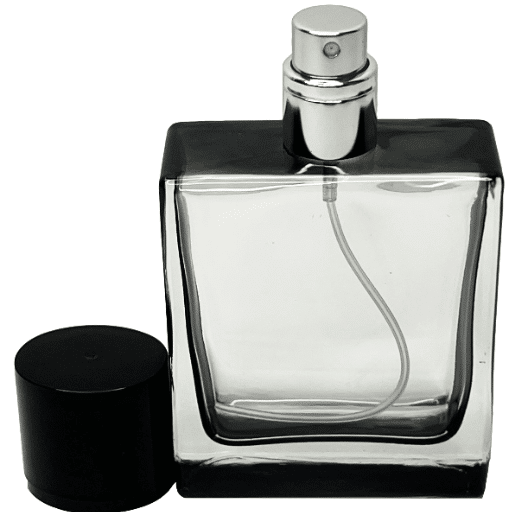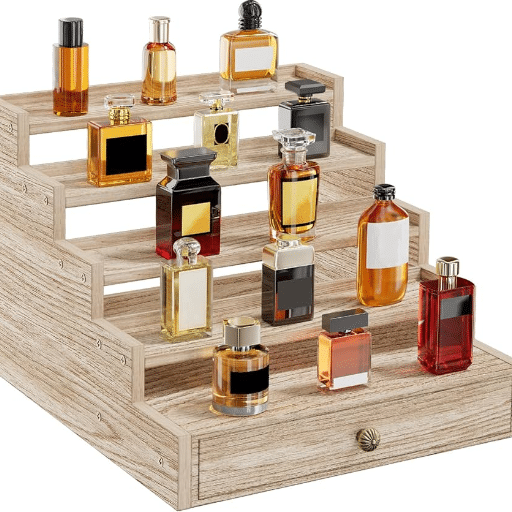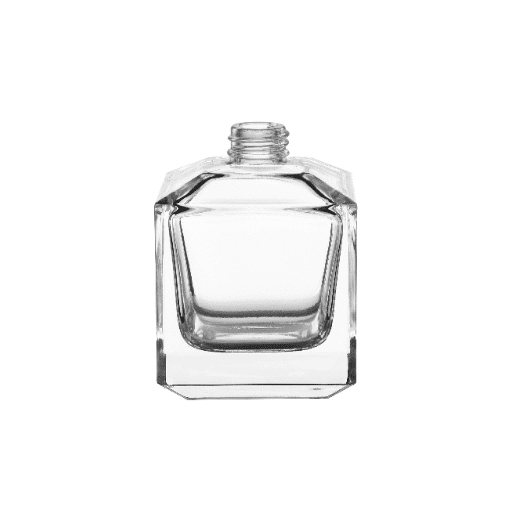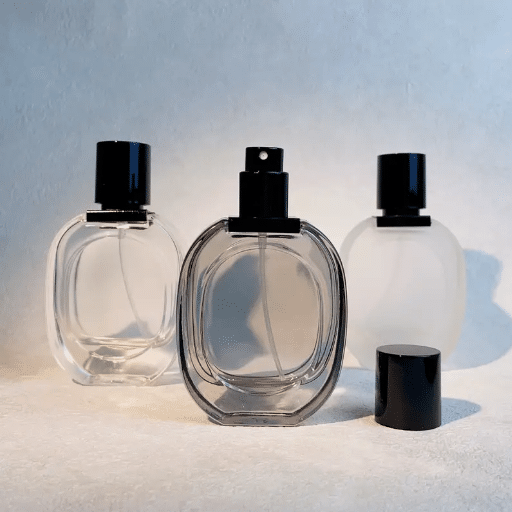Understanding Your Perfume Bottles
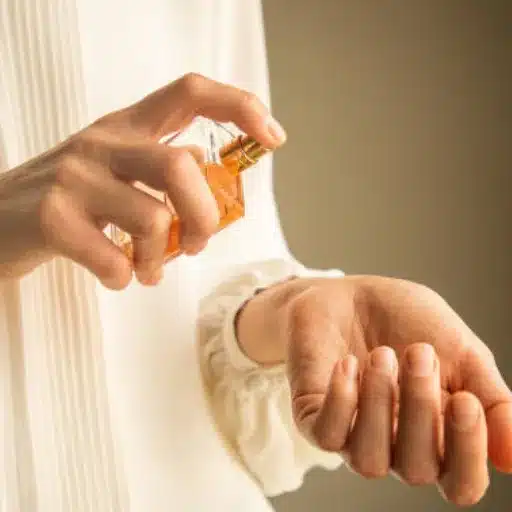
Halfway between refilling the perfume bottle means understanding its design and workings. Most perfumed bottles either come with a spray-based mechanism or a screw-on cap. Spray bottles may sometimes have a fixed nozzle. Sometimes they can be removed to reveal the open bottle neck, just like those with screw caps. Knowing what kind of closure your bottle carries comes first in refilling it properly. Also, see if your bottle has a refill option through a port, as some new designs enable refilling in this manner. Knowing these key facts will train you in handling your bottle correctly and preventing spillage or loss during the transfer process.
Types of Perfume Bottles
| Type of Perfume Bottle | Description | Key Features |
|---|---|---|
| Spray Bottles | Dispense perfume as a fine mist. | Common and convenient. |
| Rollerball Bottles | Apply perfume in small quantities using a roller. | Portable and precise. |
| Splash Bottles | Allow perfume to be directly poured. | Traditional design. |
| Refillable Bottles | Designed for easy perfume refilling. | Eco-friendly and reusable. |
| Solid Perfume Containers | Hold solidified perfume in a compact case. | Travel-friendly and durable. |
| Atomizers | Spray fine mist using pressurized air. | Vintage and elegant style. |
| Crystalline or Decorative Bottles | Often decorative, for collection or gifting. | Aesthetic appeal, complex shapes. |
| Travel-Size Portable Bottles | Mini versions for carrying perfume on the go. | Compact and lightweight. |
Components of a Perfume Bottle
Bottle or Container
This is the major trunk of the perfume bottle, typically made of glass, metal, or plastic. Glass bottles are the ones most commonly preferred due to their ability to preserve the aroma and maintain a classy appearance.
Atomizer or Spray Mechanism
It converts the liquid fragrance into a fine mist for a very controlled and even application. It is usually provided for in conjunction with a pump and a nozzle to ensure its seamless operation.
Cap or Lid
The holder of the cap is an interesting container, which in most cases can be a form of adornment. It ensures that the nozzle is protected from damage or contamination and that its decorative side contributes to the general design scheme.
Seal or Stopper
Some bottles come with a stopper to limit leakage and to preserve the perfume’s authenticity for a longer period, especially for non-spray ones.
Label or Engraving
Labels provide essential information such as brand and name of the fragrance and its concentration, whereas some more elaborate ones are designed or engraved for decoration.
Outer Packaging
Although not part of the bottle, the outside of the bottle features protective packaging for transportation and a visual representation of the brand’s founding principles, utilizing sumptuous materials and detailing.
Choosing the Right Refillable Bottle
When selecting an ideal refillable bottle, a compromise must be struck between utility, durability, and aesthetics. Begin by considering the material; glass bottles are the most popular choice due to their non-reactivity and ability to preserve the fragrance from alteration. Alternatively, aluminum or high-quality plastic options are lightweight and suitable for carrying. A close second should go to the closure: screw caps, or spray mechanisms should provide an airtight setting for total fragrance preservation. Size is equally essential: smaller for carrying, bigger for home use. Many refillable bottles offer an eco-friendly design that helps reduce single-use packaging. Style should also resonate with one’s personality, whether modern has a sleek, minimalist design or vintage has a bold, elaborate pattern, catering to a large spectrum of inclinations and preferences.
Essential Tools for Refilling Your Perfume Bottle
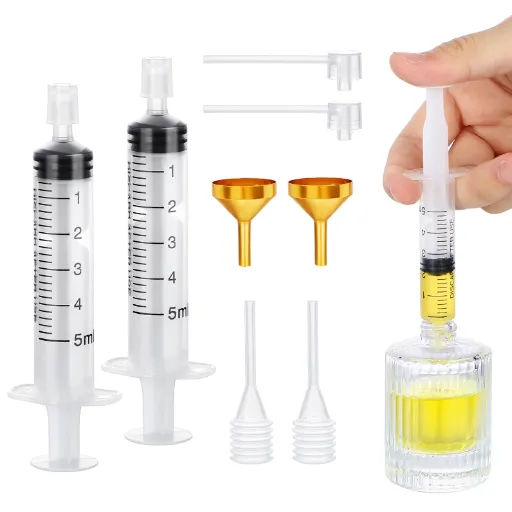
You will need a few critical tools to help you refill your perfume bottle:
- A Funnel – A small funnel ensures the clean transfer of perfume during refill, thereby avoiding spills and wastage.
- Dropper or Syringe – As in the case of such tools, precision is the key, without which perfume could be simply spilled, especially when handling those with narrow mouth openings.
- Refillable Perfume Atomizer – This handy device is well-suited for refilling purposes, making it a real traveler’s best friend.
- Clean Cloth – A lint-free cloth is recommended to wipe away any debris that may be on the outside, keeping it clean and preventing contamination.
Using these tools will make refilling your perfuming bottle easy and keep the bottle in good working condition.
Using a Funnel
Any perfume bottle can be basically refilled in good conscience without the use of such an instrument, but the little funnel is all you need while filling bottles that are very narrow. It is designed with high precision to channel the liquid into the bottles, reducing the risk of spilling and waste. To get the best from your funnel, make sure it is clean and fits well inside the bottle’s mouth. Set the funnel firmly on the neck of the empty bottle and transfer the perfume slowly to prevent excessive pouring. Stainless steel or glass funnels are preferred to prevent any reaction between the funnel materials and the ingredients of the perfume. This simple care will aid in refilling very nicely and help preserve the quality of the fragrance.
Employing a Syringe for Precision
Using a syringe for transferring perfume provides great accuracy through minimizing waste and spillage. It is indispensable for refilling small containers and travel bottles. Choose syringes with narrow tips as they fit most bottle mouths easily. Draw your desired perfume volume into the syringe and gently dispense it into your target container. Keep your syringe absolutely clean, with no residue, as cleanliness is paramount to purity. Weighing how fragrant is important to be hidden, along with its price, allows for finer control and loss prevention of your cherished scent during the transfer process.
Other Useful Tools
- Mini Funnel – A mini funnel is an ideal tool for the precise transfer of liquid perfumes. It enhances the mess-free handling of liquids, making it easier for you to use in your perfume setup. Consider stainless steel or BPA-free plastic funnels for more life and safety.
- Dropper Pipette – A dropper pipette works pretty well when it comes to managing perfumes; tiny amounts of liquid are easily dosed while minimizing wastage. This is very good when working with highly concentrated fragrances.
- Perfume Atomizer – Flexible and portable, a perfume atomizer carries a little amount of your favorite scent. Look for designs that can be refilled and have a spill-proof seal for ease of filling during travel.
- Label Stickers – Using label stickers is practical for maintaining clarity on the different fragrances. Record perfume names or notes on it so that it will be easy to recall when working with multiple scents.
- Cleaning Brushes – Mini brushes can be used to clean tools, including syringes and funnels, without leaving any residue that could contaminate your fragrances. Proper care of the tools will increase the lifespan of your tools and that of your products.
Step-by-Step Guide to Refilling Your Perfume Bottle
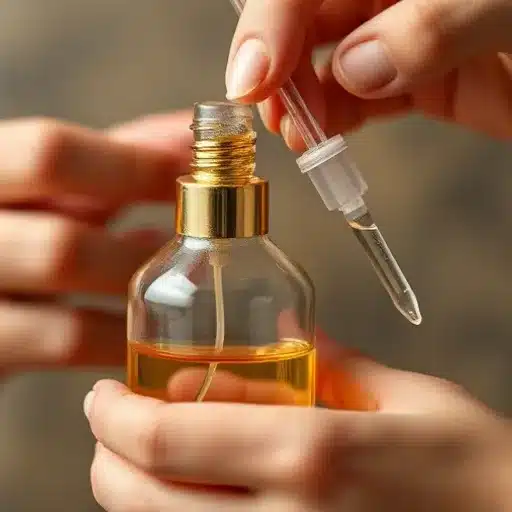
Step 1: Prepare Your Work Area
Locate a clean and flat working area free of disturbances. A sheet, a piece of cloth, or a towel should be laid down to protect against spills or drips.
Step 2: Sanitize Your Tools
Thoroughly wipe everything against contamination: syringes, funnels, pipettes, etc., with rubbing alcohol or warm soapy water. It keeps your perfume pure.
Step 3: Remove the Spray Cap
Either lift the spray nozzle gently from the empty bottle or use a little flat item, such as a butter knife, to snap it off lightly without hurting the bottle.
Step 4: Fill the Bottle
The perfume is gently transferred from its original bottle into the empty bottle that can house it, the filling process going on with utmost care to avoid any spills that could mar its precision, usually with the help of syringes or funnels.
Step 5: Reattach the Spray Cap
Once the bottle is full, place the spray cap back on the bottle tightly. Check whether or not it fits tightly to avoid any leakage.
Step 6: Test the Spray Mechanism
Spray a small quantity to confirm that it works and that there are no blockages within the mechanism.
Step 7: Label Your Bottle
Put down a label on the bottle with the fragrance’s name or any other useful information in case you are working on multiple perfumes.
Preparing the New Fragrance
A balanced perfume should provide equilibrium between the different scent notes. Great importance is placed on choosing one scent for the top, middle, and base that will experience crescendo, blending, and harmony as the least offending scents. Indeed, while notes at the top are mostly light and fresh, such as citrus or florals, middle notes are those that lend the heart to the fragrance, such as lavender and jasmine. Base notes, on the other hand, will usually extend from depth to the prolonged luster of perfume, perhaps smoldering freshly dry from sandalwood and creature-like scents of vanilla. These should be mixed gradually, starting with small quantities, to avoid overwhelming the mixture with too much of one essence. The blended fragrance must set for 24-48 hours so that the inseparable ingredients may meld together to form a fuller, more dispersed scent.
Removing the Cap and Seal
Ensure the surface is stable to prevent accidents or spills. Twist or pull gently the cap, depending on the design. Some caps might be a little tight to protect their fragrance, so steady pressure is advised rather than force. When there is a protective seal, it will require a small, sharp tool, such as a blade or scissors, to carefully cut or peel it off without damaging the bottle or injuring yourself. At this point, the fragrance shall be prepared for its first use or for blending without any compromise.
Transferring the Perfume with Care
Almost every stage of transferring perfume from one container to another requires utmost attention to precision and cleanliness. Provided that the containers involved remain clean and free of any possible residue, one should ensure this before commencing with the operation. Wherever possible, use a small funnel or a perfume pipette to prevent spills or wastage. When you’re unreachable, the syringe or the dropper will work well too for accurate measurement and transfer. Hold the container steady and at the right angle so air bubbles or overflow cannot form. A well-illuminated location with a flat working surface should be chosen to lay down a mat or cloth for soaking up accidental drips. Subsequently, sealing the bottle tightly after the perfume has been transferred will help maintain the fragrance’s quality and longevity.
Avoiding Common Mistakes When Refilling
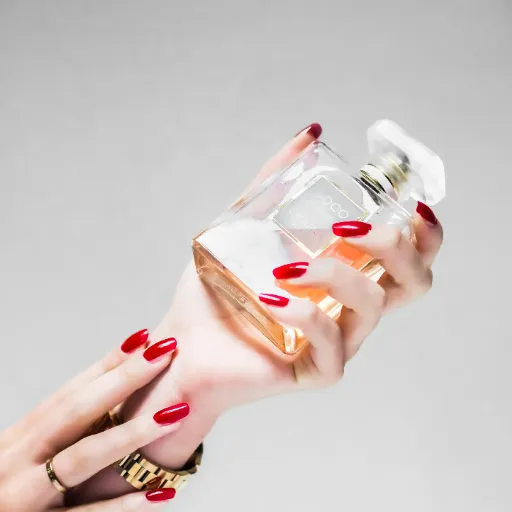
Overfilling the Container
Avoid filling the bottle to the brim as the liquid might spill out while putting the lid on. It is best to leave some feeling space at the top.
Using the Wrong Tools
Fine tools should be used for an impeccable transfer, such as a funnel or syringe. Avoid using makeshift tools that could cause a mess or contamination.
Neglecting Cleanliness
Always clean the container and tools before refilling to avoid having some unwanted residue or bacteria mixing with the actual contents.
Spilling During Transfer
Do it slow and steady. Place the container on a flat and steady surface. Work in the best-lit area possible.
Exposing Contents to Air for Too Long
Keep the fragrance or any liquid away from the air for as little time as possible to keep it in the best quality and to avoid evaporation. The moment you finish filling, seal the container.
Preventing Spills and Wastage
Before the chances for spills and waste occur, preparation and the use of good judgment are essential. Always work in a clean and well-lit area, free from clutter. Use funnels or measurement cups that have dispensers for better control while pouring liquids. Transfer only the quantities being used in your procedure at the moment. Smaller quantities mean fewer spilling possibilities. Medium-sized quantities make it easier to handle and cause less waste if any spilling does occur. Choose containers of an appropriate size for the liquid or fragrance being handled. The smallest ones are best, as containers designed for their intended purpose usually work best in preventing the escape of substance through leakage or overflow. Monitor all transfers carefully, and store everything properly in upright stands. This maintains quality and prevents unnecessary loss.
Ensuring Proper Sealing
Good sealing is imperative to keep the purity of liquids or fragrances. The tighter the seal, the lower the possibility of leakages occurring, contamination setting in, or evaporation taking place. Even if you plan to keep the container upright at all times, do not rely on cheap seals. They will give way sooner or later. For sealing, always use either caps or lids of good quality, which must specifically be designed for the given type of container. However, these must be examined for any signs of cracking, warping, or wear before use. Tamper-evident seals or closures may be an option to use, ensuring that accidental openings are not indiscriminate. Just like sealant effectiveness, room temperature could affect access along design life in a clean, dry, shaded area.
Testing the Atomizer After Refilling
Checking performance after refilling an atomizer ensures perfect functioning. Begin by replacing the atomizer and ensuring that everything is centered. Activate the atomizer very gently for the first time to prevent accidental overflow or spilling. By feeling the spray, listening to the air passage, and feeling for continuous spray, we know these are the characteristics of proper functioning and sealing. If it sputters or sprays unevenly, check for clogs or old liquid accumulation and clean if necessary. Frequent testing will maintain efficiency and extend the atomizer’s lifespan through early detection of issues.
Travel Tips for Perfume Enthusiasts
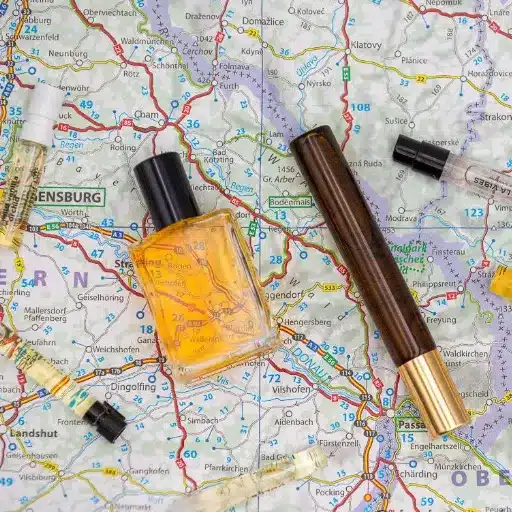
Choose Travel-Friendly Sizes
Airlines have strict rules against packing liquids in containers exceeding 3.4 ounces (100ml)-therefore, carry only travel-sized containers.
Use Leak-Proof Containers
Pack perfumes in leak-proof bags or cases to prevent damage in the event of spillages. Consider carrying atomizers for ease and portability.
Pack Strategically
Place perfumes in the center of your suitcase with soft clothes as padding. Avoid keeping them in checked baggage during times of high or low temperatures.
Consider Solid Perfumes
Solid perfumes are convenient, being compact, spill-proof, and easy to carry.
Your favorite scents can safely go with you wherever you travel by following these few pointers.
Choosing Travel-Friendly Options
Travel-Sized Perfumes
Travel sprays are manufactured with airline restrictions in mind and are ideal for mobile use. These smaller bottles actually contain less than 3.4 ounces (100 milliliters) of liquid, making them TSA-compliant for carry-on travel. Many popular fragrance brands offer these versions, allowing you to enjoy your signature scent without needing to pack full-sized bottles.
Refillable Atomizers
Refillable atomizers remain one way of traveling green while saving space. These small containers can be outfitted with your least-favorite perfume and come in an array of designs and sizes. They are lightweight and durable, making them a good fit for throwing inside a handbag or pocket for application throughout the day.
Rollerball and Stick Fragrances
Rollerball and stick fragrances are compact, mess-free alternatives to traditional liquid perfumes. They ensure the application is precise and put directly where needed without any chance of accidental spills or leaks. In addition, these tend to be more affordable and versatile.
Traveling young and in elegant style definitely includes travel-friendly options that will keep you feeling cool and confident throughout the journey. Portability, durability, and ease of use should be your priorities for your travel scent companion.
How to Fill a Travel Atomizer
- Prepare Your Tools – Make sure that the spray nozzle on the perfume bottle is removable; your necessities will be a travel atomizer, the perfume or cologne you intend to transfer. Also, clean the atomizer first to prevent contamination of odours.
- Remove the Spray Nozzle – The spray nozzle on most full-sized bottles can be easily lifted off. Simply hold onto the base of the nozzle and gently lift it away. This then uncovers the stem, which goes all the way into the liquid.
- Align the Atomizer with the Perfume Stem – Most modern travel atomizers have a refillable port on the bottom. Match the port from the atomizer to the exposed perfume stem.
- Pump the Perfume into the Atomizer – Repeatedly press down on the base of the atomizer against the perfume stem. The perfume will be pumped out into the atomizer. Stop when the atomizer is about three-quarters full to allow for some air exposure and avoid overfilling.
- Test the Atomizer – Afterwards, replace the spray nozzle back on the original perfume bottle and do a light spraying test from the atomizer to ensure everything works fine.
- Secure the Cap – Ensure the travel atomizer is sealed tightly to prevent leakage while in use and during travel. And there you go—your trusty sidekick for the upcoming journey!
Best Practices for Carrying Perfume on the Go
Choose the Right Atomizer
Purchase a secure, leak-proof travel atomizer that is also sturdy and compact. Ensure it is made from materials such as aluminum or plastic to prevent it from breaking during travel.
Store in a Safe Place
Keep the travel perfume inside a small compartment in your bag, which will prevent shaking or being impacted. A padded bag for makeup or an inner zippered pocket will provide additional protection.
Keep Away from Heat and Sunlight
Occasionally, extreme heat or prolonged exposure to sunlight can cause the fine perfume to spoil. Give it a home somewhere cool and dry, like the carry-on, away from direct prying attention.
Opt for TSA-Friendly Sizes
Ensure your perfume adheres to the TSA liquids law while traveling by air by keeping the atomizer size within 3.4 ounces (100 milliliters) to avoid issues at security checks.
Consider Solid Perfume Alternatives
If you are concerned about leaks or breakages, solid perfumes are a suitable alternative. They will keep the compact mess away from the aromatic scented experience that liquid perfumes give you.
Secure the Cap and Nozzle
Double-check that the atomizer’s cap and nozzle are securely in place before packing. This simple step helps eliminate leaks and ensures your belongings remain safe from spills.
Reference Sources
-
How To Refill Perfume Bottles Successfully
- Summary: This guide provides a step-by-step process for refilling perfume bottles. It includes removing the cap and sprayer, cleaning the bottle, and using tools like a funnel or syringe to transfer the perfume.
-
Mastering the Art: How to Refill Perfume Bottles Like a Pro
- Summary: This comprehensive guide explains the methodology for refilling perfume bottles, focusing on cleaning the bottle thoroughly before refilling.
Frequently Asked Questions (FAQs)
Q: What is the best method for transferring perfume to a new bottle?
A: The best way to transfer perfume to the new bottle is to use either a funnel or a syringe. A funnel will help to limit the spillage while pouring into the smaller bottle. The syringe serves for an accurate transfer when the opening of the new bottle is too narrow. One should ensure that both the empty perfume bottles and the new bottle are clean and dry before starting, to prevent contamination of the fragrance.
Q: Can I refill a perfume bottle with a different fragrance?
A: You can try refilling a perfume bottle with another fragrance, but you should ideally decant whatever remains into the bottle beforehand. Wash it out thoroughly to remove every trace of residue left from the previous fragrance. Mixing fragrances could prove to turn into something undesirable. Additionally, some bottles can be refilled, but it’s essential to verify that the materials are compatible with the new perfume. Always try with a small quantity first.
Q: How do I refill a perfume bottle without spilling?
A: Using a funnel or syringe is the best idea to refill a perfume bottle without spilling. Put the funnel through the bottle neck, ensuring it fits tightly. Then, if you choose to fill the bottle by syringe, suck the perfume into the syringe and then slowly dispense it into the bottle. Also, performing this operation on a flat surface will prevent any unfortunate spills. Slowly and carefully filling will reduce any mess.
Q: What tools do I need to refill a perfume bottle?
A: If one wants to refill the perfume bottle, things like funnels, syringes, and maybe pliers to remove the sprayer will come in handy. You need a funnel to pour liquid without spilling anything; a syringe allows you to refill in a more controlled way, especially if the opening is narrow. Pliers will come in handy for loosening the tightly sealed cap or sprayer. It also helps to have an empty perfume bottle ready. All tools and implements should be clean to preserve the fragrance.

